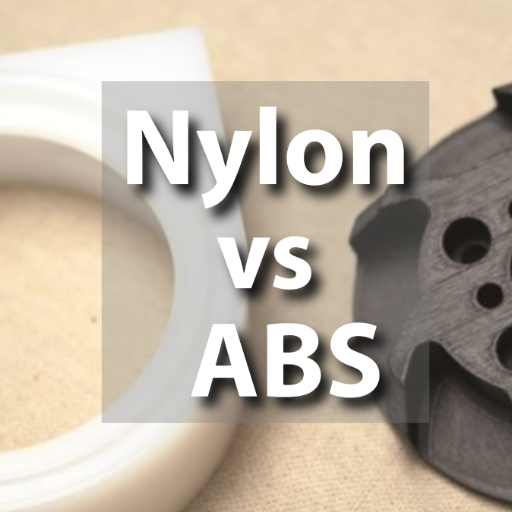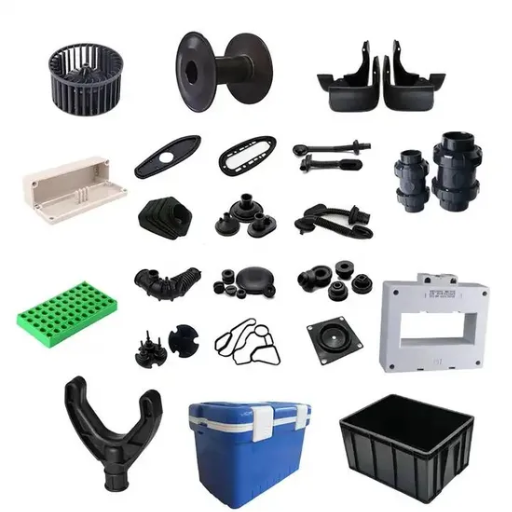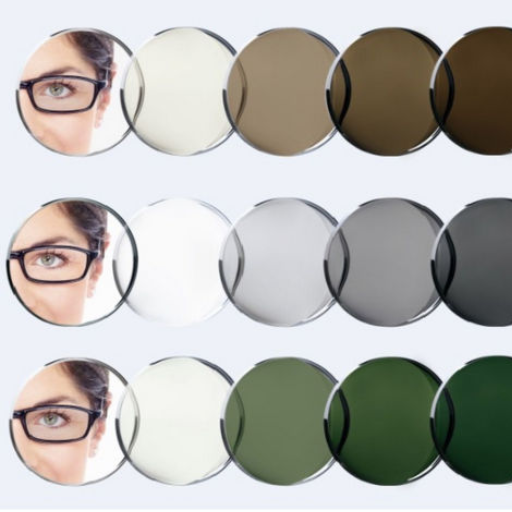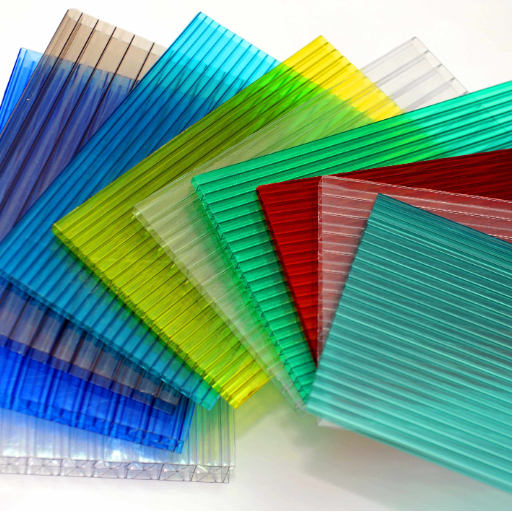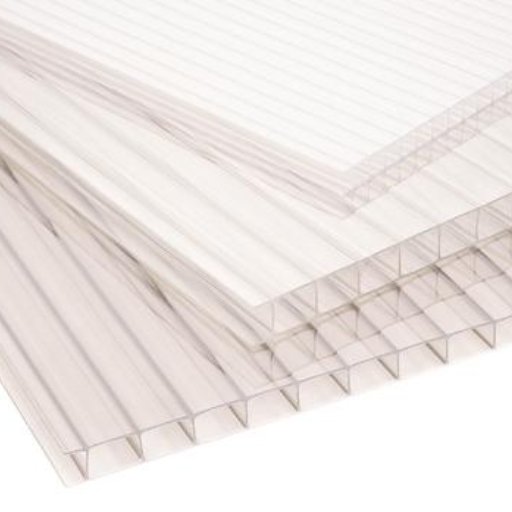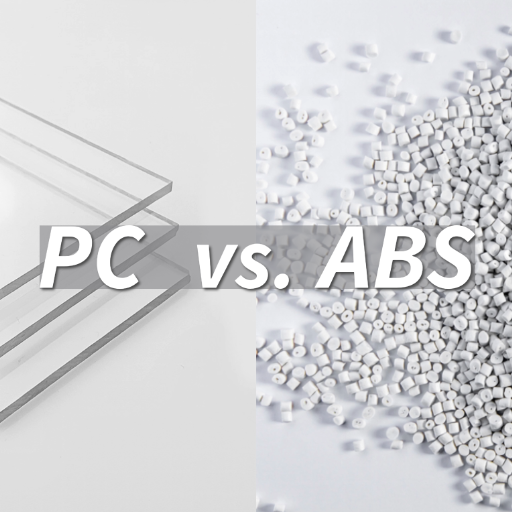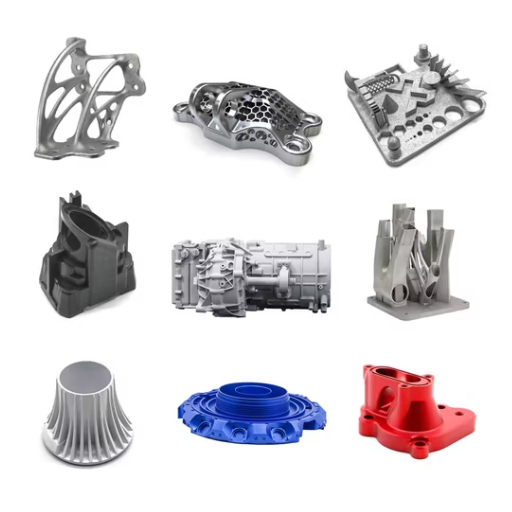Also referred to as acetal, polyoxymethylene (POM) plastic is an advanced engineering thermoplastic recognized for its versatility and toughness. POM plastic has penetrated a wide range of industries, from automotive and marine to appliances and consumer electronics, establishing itself as a go-to material for precision components and other demanding applications. In this article, we will discuss the numerous and varied characteristics of POM plastic, which highlight the ever-increasing value of this material in contemporary engineering and product design. Readers will appreciate the unparalleled aspects of POM and its innovative uses that underscore its significant impact in accelerating solutions across industries.
What is POM and How is it Used in Industry?

POM, or Polyoxymethylene, is an engineering grade thermoplastic with very high stiffness and low friction. It also has excellent dimensional stability making it suitable for the automotive, aerospace and consumer electronics industries where precision parts like gears, bearings, and fasteners are required. Its versatility coupled with good mechanical properties and durable resistance to wear and chemicals makes it appropriate for use in harsh conditions where reliability is needed.
Understanding the Basics of Polyoxymethylene
Having worked with polyoxyethylene (POM), it is a dependable and versatile material for engineering applications. It consistently maintains high performance due to its strength and dimensional stability under tough conditions. From precision automotive parts to intricate consumer electronics, I have seen it used in low-friction and high-wear applications. Its further mechanical properties, such as chemical resistance, add to its appeal allowing it to outperform other materials which tend to degrade rapidly. It is a material of choice when durability and precision are required.
Industrial Applications of POM Plastic
The use of POM plastic is prevalent in the automotive, electronics, and consumer goods industries. It can be used for the construction of components like gears, bearings, fasteners, and precision parts owing to its strength, low friction, and excellent wear resistance. Its chemical and thermal stability also make it suitable for components which are subjected to extreme conditions, including fuel systems and electrical connectors. POM is a versatile plastic and, along with its remarkable durability, makes it reliable for various industrial applications.
The Molecular Structure of POM
While reviewing POM’s molecular structure, I can state with a fair degree of certainty that its design is central to its remarkable performance yield. This is due to the polymer’s repeating formaldehyde unit composition, which results in a highly crystalline structure with outstanding strength and rigidity, undergoing extensive crystallisation. It is characterised by the strong bonds between carbon and oxygen in its backbone which provides great resistance to chemical and thermal stress, ensuring stability under severe external conditions. If it were not for this structure, POM could not maintain such low friction and wear properties, making it an indispensable component in industries that need robust and dependable materials.
How Does POM Plastic Compare to Other Materials?

POM plastic has distinguished itself from other types of materials due to the alacart balance of strength, stiffness, and low friction properties. Relatively to metals, it offers lower weight without sacrificing dimensional stability and wear resistance. Unlike most other plastics, POM tolerates mechanical stress and harsh conditions far better than other types of materials making it a preferred choice for precision implement. POM is more versatile than nylon, polyethylene, and other polymers due to its chemical resistance and thermal stability.
POM vs. Traditional Plastics
In comparison with plastics, POM’s performance is unmatched in numerous applications. One of the reasons POM is so unique is that it has remarkable mechanical strength as well as low friction coupled with high wear resistance, traits not often seen in simpler materials such as nylon or polyethylene. From my experience, the ability to sustain structural integrity under continuous loading and extreme conditions makes it the most preferred material for precision engineering, POM performs exactly as expected. Furthermore, his stability, chemical and thermal make sure he outlasts traditional alternatives in demanding environments. POM is reliable and consistently proves his worth for those who require dependability and life span in industrial applications.
Comparing Copolymer and Homopolymer Acetal
Copolymers and homopolymers are the two basic classifications of POM plastics and have differences tailored to meet specific use cases. Applications that require high precision in machining bear the use of homopolymer acetal due to its rigorous crystallinity enabling superior tensile strength and stiffness, while also sacrificing some chemical resistance and thermal stability relative to the copolymer alternative.
With a less stable molecular structure, copolymer acetal does provide better resistance to chemicals and thermal decomposition. It’s also better at maintaining its shape and will not distort over long periods of time when subjected to changing temperature, which softens the risk of warping or cracking over time. These attributes, including resistance to moisture, chemicals, and heat, make copolymer acetal particularly useful in the construction of automobile parts as well as fluid handling devices.
Specific needs in an application determine the selection between copolymer and homopolymer acetal. If maximum rigidity and mechanical strength are desired, homopolymer acetal is an often sought option. When more flexibility to demanding chemical and environmental factors is required, copolymer acetal works best. In both cases, the adaptability and high performance capabilities of POM plastics are proven in industrial engineering workings.
Advantages of Acetal Polymer in Engineering
Having worked with different engineering materials, I can confidently state that acetal polymer has transformative capabilities in a number of industrial applications. Its low friction and remarkable wear resistance enables application in high precision parts such as gears and bearings that require enduring functionality and smooth motion. Further, the high strength to weight ratio of acetal polymer ensures reliability in terms of component performance due to mechanical stresses while also avoiding additional weight. Whether it is a material’s moisture and chemical resistance, the ability to sustain structural integrity under a range of temperatures, or significant shifts in temperature, acetal polymer delivers in tough engineering situations.
What Are the Mechanical Properties of POM?

The full name of POM is polyoxyethylene, and it is known for having outstanding mechanical properties. Its high stiffness and outstanding tensile strength, alongside exceptional shape retention makes it suitable for advanced components made with POM. Moreover, POM’s low friction and erosion resistance guarantees longevity in applications with cyclic motion or stress. The use of POM in versatile industries is further justified by its high strength-to-weight ratio and deformation resistance under mechanical forces.
The Tensile Strength of POM
With respect to POM, I discover that it consistently performs with excellence in terms of tensile strength. The tensile strength values of POM are said to fall within the range of 60 to 70 MPa depending on the grade and specific manufacturer’s specifications. This strength permits POM to endure considerable stress without undergoing permanent deformation, which renders it useful in precision and high load-bearing applications. Personally, I have witnessed its dependability in the automotive and electronics manufacturing industry, where its ability to withstand tension provides sustained durability and functionality over prolonged periods.
Exploring Wear Resistance in POM
Perhaps the most remarkable property of POM is its wear resistance; this is the case in situations where parts are subjected to repeated friction or contact, WESC. Through my experience with POM, I found that its wear resistance is dependable, even in difficult conditions. Here’s the reasoning:
- Low Friction Coefficient –POM has a low friction coefficient which inherently propitiates smooth sliding motion over other surfaces without causing any significant abrasion. It is beneficial in the construction of gears, bearings, and sliding parts.
- High Surface Hardness – POM is harder than most materials synthetized for its scratch and abrasion resistance. Tolerance to mechanical actions while retaining dimensional accuracy drives the need of using it in various applications.
- Self-Lubricating Properties – One of the most important characteristics of POM is that it can operate in unsaturated conditions without any lubrication. This simplifies upkeep and maintenance, reduces expenditure on mechanical parts and improves their lifecycle.
- Resistance to Environmental Factors – POM is very resistant to chemicals, moisture, and different temperatures. With most materials the resistance to wear would otherwise degrade, POM components ensure dependability over time in harsh conditions.
In summary, its parameters allow POM to be utilized in applications requiring uniform wear resistance, such as conveyor systems, pump parts, and machinery components. Having witnessed, on several occasions, its frictional endurance and structural integrity retention under diverse condition changes, I keep recommending it to professionals across industries.
The Role of Dimensional Stability
Dimensional stability defines a material’s capability to maintain its original dimensions and shape despite exposure to changes in temperature, humidity, or mechanical stress. For POM, this parameter is fundamental as it ensures reliable performance across a wide range of applications in precision engineering where even minute changes in dimensions can result in misalignment and loss of operational efficiency. Its remarkable stability guarantees that components are dependable, accurate, and functional under a wide-range of challenging environments which makes it a preferred material for engineers and manufacturers.
Why is POM Considered a High-Performance Engineering Plastic?

POM is distinctly noted for being one of the highest-performing engineering plastics due to its singular property combination. Its outstanding brand marking in mechanical POM wear resistance applications under friction, and volumetric hypothyroidism make it invaluable for precision and enduring applications. When framed in the context of these outstanding chemical stability and resistance, added in mechanical stress flexibility, POM transforms itself as unyieldingly dependable, irrespective of the impact or magnitude of automotive parts, industrial machinery, and consumer goods pervading in the market. It remarkably achieves the unachievable rigorously demanded by engineers alongside other professionals in manufacturing.
Evaluating Chemical Resistance in POM
In terms of versatility, Polyoxymethylene (POM) exhibits remarkable performance in a plethora of volatile organic compounds, fuels, and even weak acids. Its stable molecular structure prevents degradation from chemical exposure, readapting polyoxymethylene to conditions which are otherwise considered hostile. Still, POM has some susceptiblity to strong acids and bases, so particular attention should be placed on evaluating the exposure environment to ensure reliable functionality.
Assessing Impact Resistance and Durability
its impact resistance and durability are unrivaled. As previously noted, POM is highly impact resilient and able to withstand significant mechanical loads without cracking or breaking. It may be considered highly suitable for parts that undergo repetitive motion or sudden dynamic loads, like gears, bearings, and structural fittings. It is important to note that POM has a temperature constraint; while performing adequately in a number of environments, extremely low temperatures can reduce impact resistance. With proper specification matching, POM offers remarkable durability across industrial and consumer applications.
Applications in Precision Parts Requiring High Stiffness
The superb mechanical properties of POM result in it being a popular choice for applications where high stiffness and dimensional stability are required. These include, but are not limited to, gears, precision bearings, and screws, as well as washers and other components with narrow tolerances where wear resistance and rigidity are fundamental. Furthermore, POM is crucial in both industrial and consumer products due to its low friction and smooth surface, which improve the performance of dynamic mechanical systems.
How is POM Plastic Manufactured?

POM plastic, or polyoxyethylene, is crafted using a technique known as polymerization. In my professional experience, the process initiates with the polymerization of formaldehyde or trioxane, which results in the formation of polymers that are highly crystalline and finely grained. This is succeeded by stabilization steps aimed at improving the material’s thermal and chemical resistance, thus augmenting its durability and performance. Furthermore, the material is customizable to strict design specifications, through molding or machining tailored to particular gauges, rendering it useful in many applications and industries.
The Injection Molding Process
Under the umbrella of modern production, injection molding is the process which includes the melting of material (most commonly plastic) which is then poured into a mold with the desired shape and allowed to cool into the end product. During the mold filling, injection processes, the raw material is subjected to heat and pressure before being forced into the cavity of the mold where it is subsequently allowed to cool and solidify into the intended end product. The automotive and health care industries, as well as dealing with consumer electronic goods, extensively utilize injection molding technologies because of its efficiency at reproducing precisely complex shapes, high level of precision, and speed of reproduction.
Understanding Polymerization of POM
Polyoxymethylene (POM) exhibits unique characteristics that stem from specific methylol processes of trioxane or formaldehyde. In my experience, its manufacturing involves meticulous details. POM is customarily produced by the polymerization of formaldehyde or its derivative, trioxane, catalyzed by acids. This gives rise to a crystalline thermoplastic with high strength, stiffness, and resistance to chemicals. Through my observations, the efficacy of POM was always reliant on the quality of the polymerization, and this made POM widely applicable where durability and stability were key design requirements. In particular, POM is used in engineered plastics of high-wear components like fasteners and gears, and it shifts from one industry into another only refraining from fields involving harsh solvents or radiation. The material is characterized by a low degree of thermal expansion, excellent dimensional stability. strip-like POM samples possess high tensile strength, while rods demonstrate impressive compressive strength.
Enhancing POM with Reinforced POM Techniques
Reinforced POM procedures include the incorporation of some structural elements like glass fibers, carbon fibers, or even mineral fillers into the polymer matrix that improves the mechanical characteristics and thermal stability of the polymer. These composites improve resistance to abrasion, creeping, and tensile strength so that POM can be used in demanding high-performance applications in automotive, industrial, and electronic fields. Controlled modification of reinforcement ratios while achieving thorough dispersion grants engineers the power to customize the material to particular needs, enhancing its performance and durability.
Reference
- Polyoxymethylene (POM Plastic): Structure & Material Properties – A detailed guide on the structure and properties of POM plastic.
- The Many Applications and Uses of POM Plastic – Insights into the various applications of POM plastic in engineering and manufacturing.
- Polyoxymethylene (POM) Applications in Automotive and Electronics – Focuses on
Frequently Asked Questions (FAQs)
Q: What is POM plastic and why is it commonly called acetal?
A: POM (Polyoxymethylene) plastic, also known as acetal, is a type of engineering thermoplastic known for its high stiffness, low friction, and excellent dimensional stability. These properties make it ideal for precision parts in mechanical applications.
Q: What are the main differences between POM homopolymer and copolymer?
A: POM homopolymer, often referred to by the brand name Delrin, offers better mechanical properties and higher strength compared to copolymer. However, POM copolymer has superior resistance to thermal degradation and is less prone to porosity, making it better suited for certain applications.
Q: How is POM plastic used in food processing applications?
A: POM plastic is used in food processing due to its low moisture absorption and good resistance to chemicals and solvents. It is often used to produce components such as gears, bearings, and conveyor belts that must withstand the rigorous demands of food processing environments.
Q: What makes POM plastic suitable for applications requiring good dimensional stability?
A: The semi-crystalline structure of POM provides excellent dimensional stability, which is crucial for precision components. This allows POM to maintain its shape and size under varying environmental conditions, such as changes in temperature and humidity.
Q: Can POM plastic be enhanced for improved performance properties?
A: Yes, POM can be enhanced with additives to improve its performance. For example, UV stabilizers can be added for better resistance to sunlight in outdoor applications, and reinforcing fibers can be added to increase strength and rigidity.
Q: How is POM plastic polymerized by anionic catalysis?
A: POM plastic is polymerized by anionic catalysis, a process where formaldehyde or its equivalent is polymerized using a catalyst to form the resulting polymer. This process allows for the creation of both acetal homopolymer and copolymer with different properties.
Q: What are the advantages of using POM in machine components compared to other plastics?
A: POM offers better mechanical properties, such as high stiffness and strength, compared to many other plastics. It also provides low friction and excellent wear resistance, making it ideal for machine components that require durability and long service life.
Q: What is the significance of Hermann Staudinger in the development of POM?
A: Hermann Staudinger, a German chemist, made significant contributions to polymer chemistry, which laid the groundwork for the development of materials like POM. His research on macromolecules was instrumental in understanding the structure and synthesis of polymers.
Q: Why is POM supplied in a granulated form?
A: POM is supplied in a granulated form to facilitate its use in various manufacturing processes, such as injection molding and extrusion. This form allows for consistent feeding into machines, ensuring uniformity and quality in the production of POM parts.







